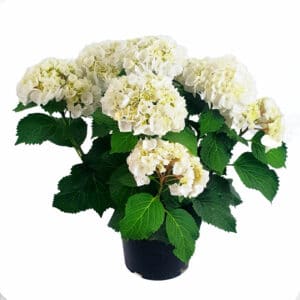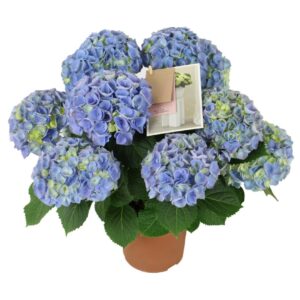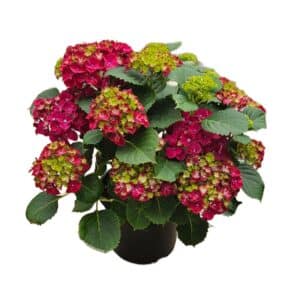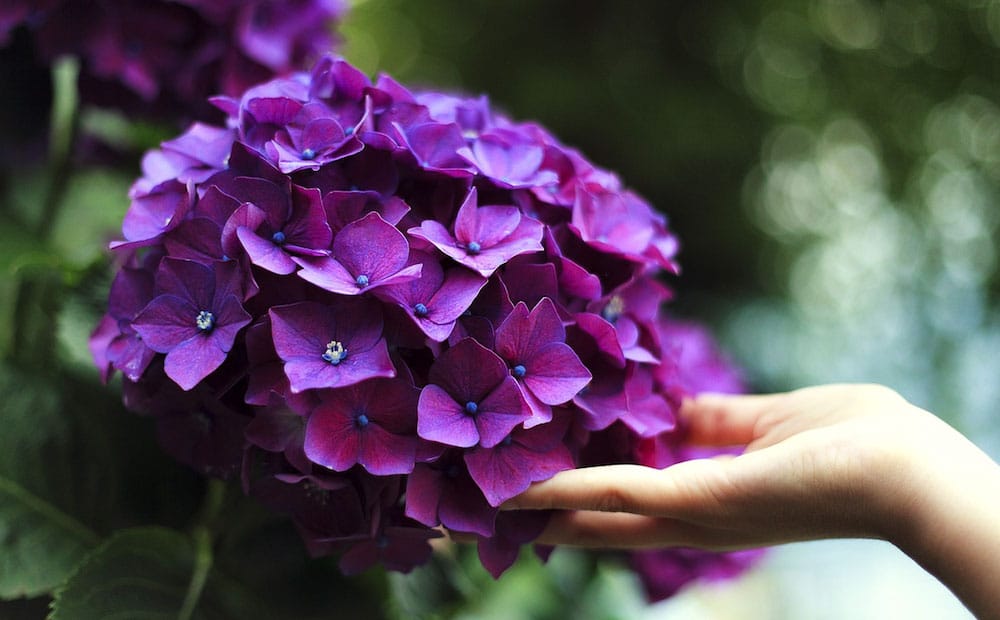Hydrangea, also known as Hortensia, is a common plant popular in Spring when the shrub is in full bloom. It also makes a nice gift for Mother’s day. The most common types are the mop-head and lace-head varieties. The hydrangeas is known for its luxurious flowers which vary from shades of pink, blue and white. Some varieties of hortensias also change colour depending on the pH of the soil.
Caring for a hydrangea can be easy once you get to know the plant. This blog can help you start your journey with your new plant.
-
Sale!

White Hydrangea Plant in Pot 19cm
Original price was: €15.00.€12.90Current price is: €12.90. -
Sale!

Hydrangea River Blue in Pot 19cm
Original price was: €15.00.€12.90Current price is: €12.90. -
Sale!

Hydrangea – Ortenzia Fire Red In Pot 19cm
Original price was: €15.00.€12.90Current price is: €12.90. -
Sale!

Hydrangea Ocean Pink in Pot 19cm
Original price was: €15.00.€12.90Current price is: €12.90.
Common name: Hortensia
Botanic name: Hydrangea
Flowering time: Blooming starts April to August
Height and Spread: 80cm x 90 cm for shrubs
Care Level: easy to moderate
Aspect: for the Maltese climate, it is ideally to only place the hydrangea in areas where there is shade, never in direct sunlight. If placing indoors, direct sunlight is still not recommended as the flowers and leaves can burn.

Best time to plant
Spring when the flowers are blooming and the plant is in its best condition. If the hydrangea was bought last spring, you may need to check whether the pot needs to be changed. A small pot may interfere with the absorption of water from the roots and may ultimately lead to plant death.
Watering
Hydrangeas love water, so it is ideal to always keep the plant moist but to make sure that there isn’t any excess water kept in the underplate or the pot itself. Excess water needs to be removed. Rain water is better to use if available.
Pruning
It is best to cut off old flowers in early spring and not before so that the new buds can be protected from the cold and wind during the winter months.
You can read more about deheading hydrangeas on our next post here.

Are the blooms on your hydrangea shrubs fading or turning brown?
No need to worry – this is simply a sign that it’s time to remove the flowers, a process called deadheading.
When you deadhead hydrangeas, you aren’t harming the plants at all. Removing the spent blooms triggers flowering shrubs to stop producing seeds and instead put their energy toward root and foliage development. This makes plants stronger and healthier, so by deadheading, you’ll be doing your hydrangeas a favor.
Fertilizing
all purpose NPK such as the Ciemhus universal liquid fertiliser will provide all the fertilizing hydrangeas need. Using organic matter is also a good idea!
Did you know?
– Hydrangea comes from Greek. “Hydor” refers to water and “angos” refers to jar or vessel. The name itself reflects this plants demand for water
– In Japan these plants symbolize gratitude. Ancient emperors used to give to their mothers as a thank you.
– Victorians used hydrangeas as a symbol of vanity due to its blooms. Each colour represents a meaning:
* Pink- love
* Blue- forgiveness
* White- bragging
* Purple-abundance and understanding
